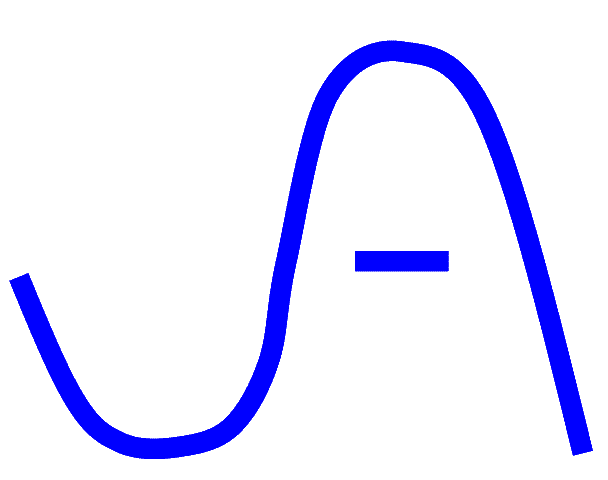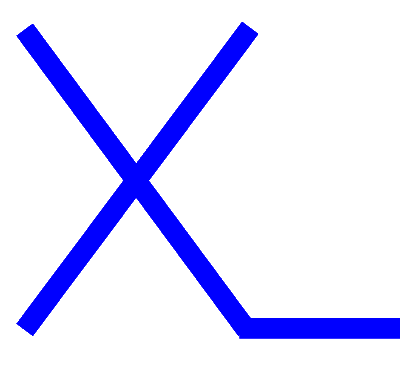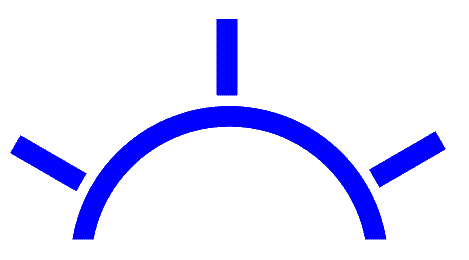Click on brand to link to another ranch's information.



We Are The Experiment!!!
by Billy Tiller, rancher and farmer from the western Panhandle of Texas
The research to prove or disprove the positive effects of cloud seeding is being carried out every year over our heads. The High Plains Underground Water District has teamed with Dr. William L. Woodley of Woodley Weather Consultants to try and increase the summer’s rainfall. The only thing they have forgotten to tell us is that the scientific community has not embraced many of the findings of cloud seeding. Dr. Woodley himself was quoted by one Texas newspaper as follows:
Ø ``The problem is proving the process actually works and how,'' Woodley said. ``We're using it here in Texas, even though we really haven't even proven it works.''[1]
Can a cloud be destroyed or dissipated when it is seeded?
Ø Jim Conkwright , manager for High Plains Underground Water District said, “We have not seen hard evidence from those independent analysts that we’ve ever dissipated a cloud.”[2]
Ø Richard Bowers, North Plains Groundwater District manager, said “…that it is possible to fire a flare into a cloud and it can dissipate. But normally that cloud would not produce much in the first place. You have to have a meteorologist that is certified and they need to be on site at all times in contact with the pilot. The pilot could easily get in trouble or tear up a cloud without the right guidance".[3]
Ø George Bomar, retired Senior Meteorologist of the Texas Natural Resource Conservation Commission has long been a proponent of cloud seeding in Texas. However even he states in a conclusion to one of his papers on cloud seeding, “Seeding at the wrong time and in the wrong place(s) may actually decrease the rainfall. It now seems possible, given continental clouds with weak updrafts, to seed in such ways as to hasten the dissipation of clouds, leading to ‘craters’ in the cloud field.”[4]
Ø Dr. Charles Doswell, a meteorologist who recently retired from the National Severe Storms Laboratory in Norman, Oklahoma, has much to say about weather modification and its possible negative impacts. The essay I will cite is titled, “What About Weather Modification?” and can be found at the following internet link http://www.flame.org/~cdoswell/wxmod/wxmod/wxmod.html. Dr. Doswell states “…Cloud seeding requires the presence of a ‘suitable’ cloud for seeding. The definition of ‘suitable’ is such that the cloud might well go on to produce precipitation even if it is not seeded at all! All that seeders can hope to do is wring a bit more out of such a cloud than would otherwise fall. However, production of precipitation produces downdrafts, which kill clouds! This is one of the problems with identifying the true net result of seeding ... the desired effect can kill off the clouds, perhaps prematurely. There are lots of complicating factors here. ”[5]
Can seeding clouds cause rain that would have fallen in one location to fall in another? Robbing Peter to pay Paul…
Ø The High Plains Underground Water Conservation District informational web site states, “NO. The idea that rainfall increases in one area must be offset by decreases elsewhere is a misconception. There are no indications of rainfall decreases downwind from any long-term cloud seeding projects. In fact, there is evidence that precipitation increases occur downwind of target seeding areas.”
The problem with their comments is that they never admit to anything negative. Now lets see what others, that are qualified meteorologists have to say on this subject.
Ø Dr. Doswell says, “... Let's assume for the moment that cloud seeders consistently are able to wring rainfall out of clouds that would otherwise not have produced any rain at the location where the seeding took place. Isn't this potentially stealing water that might have fallen elsewhere? Couldn't citizens "downstream" of the seeded area sue in order to get compensation for this "stolen" precipitation? I've heard that this sort of thing has been tested in the courts, and the cloud seeders have argued that the folks downstream can't prove that the seeding actually resulted in a loss of precipitation. But this is arguing it both ways, folks. For their customers, they argue that their methods work…. but if they get sued, they say it can't be proved that their methods work! If this stuff can be shown to work in a conclusive way, then there's no doubt these guys are stealing water from someone!”[6]
Ø
Dr. Edwin Kessler, retired
director of the National Severe Storms Laboratory in Norman, Oklahoma, and past
professor of Meteorology from University of Oklahoma, said “…he was skeptical
the state (Oklahoma) did anything but tinker with the timing and location of the
rain - not the amount. ‘It may be taking one person's rain away from him to
give another person,’…He said the program's popularity is rooted in hopefulness
and eagerness to take action against drought, even if the action is misguided.”[7]
These are general statements by the scientific community toward cloud seeding:
Ø The World Meteorological Organization (WMO) states, “direct physical evidence that precipitation, hail, lightning, or winds can be significantly modified by artificial means is limited.”[8] The WMO goes on to state in this document that, “Operational programs should be conducted with recognition of the risks inherent in a technology which is not totally developed. For example, it should not be ignored that, under certain conditions, seeding may cause more hail or reduce precipitation.”[9]
Ø Dr. William R. Cotton, professor of Atmospheric Science at Colorado State University, states, “Overall there is little hard scientific evidence that anthropogenic activity, either advertently or inadvertently, is causing significant changes in weather and climate, particularly on the global scale. This is certainly true with respect to cloud seeding where there are only a few limited examples of where cloud seeding has been scientifically shown to be effective in enhancing rainfall. Nonetheless, there are many nations which are currently running operational cloud seeding projects. Apparently, the decision has been made in those nations and states that the benefits outweigh the risks of applying the scientifically unproven technology of weather modification by cloud seeding. The major risks, however, are limited to the possibility of creating severe weather or floods, and to increasing rainfall in one local region at the expense of rainfall in a neighboring local region.”[10]
Ø UCAR (University Corporation for Atmospheric Research) is a consortium of universities dedicated to education and research. UCAR manages the National Center for Atmospheric Research (NCAR). NCAR’s Research Applications Programs staff issued a paper titled, “Seeding and Precipitation Processes.” In this work the following statements are made in their summary, “During the last ten years there has been a thorough scrutiny and evaluation of cloud seeding projects involving the static seeding concept. Although there still are indications that seeding can increase precipitation, a number of recent studies have questioned many of the positive results, weakening the scientific credibility of some of these experiments. As a result considerable skepticism exists whether this method provides a cost-effective means for increasing precipitation for water resources.”[11]
Ø Dr. Doswell states, “If there were clear evidence that cloud seeding truly worked as claimed, it might be a different story.... However, since there is no such convincing (scientifically credible) evidence in support of these operations, I think at least the customers should be made aware of the fact that most atmospheric scientists (including many, like myself, who have nothing either to gain or to lose should cloud seeding be discredited) do not believe in the efficacy of weather modification by cloud seeding ... as evidenced by the AMS Policy Statement. If atmospheric scientists don't buy this, on the whole, then should citizens prefer to believe the cloud seeders?”[12]
Ø Dr. Kessler, when talking about a similar weather modification in his home state of Oklahoma, states, “They've done nothing but spend the state's money… It doesn't accomplish the announced purpose. There's no evidence."[13]
Ø George Flickinger, former chief meteorologist for KTXS-TV in Abilene, Texas, made the following statement in a newspaper article, “You really can’t predict what you get once you start messing with the weather,” he said. “What’s to say a seeded cloud might not produce an F3 tornado somewhere along its journey and wind up killing a dozen people? Or that a cloud might just stop where it is, dump its rains and cause flash flooding in a given area? Or that someone will say that the seeding efforts wound up stealing the rains they needed? “Who would be responsible?”[14]
This misguided cloud seeding is not free, we are paying for it:
The cloud seeding program is full of negative possibilities given what numerous respected meteorologists have said in prior statements. No one can weigh the costs of these possible negative effects, however anyone can tell you that this program is costing us hard earned tax dollars. According to the High Plains Underground Water District website the years 1999 and 2000 costs totaled $ 1,754,241 to operate the cloud seeding program. The anticipated costs for 2002 is a budgeted $480,000. No costs were stated for the program years 1997, 1998, or 2001. Each person will have to make his or her own judgment on those estimates, and what the total program costs would be with the additional 3 years. The water district’s website also informs us that the state is funding 50% of these costs, but here is some news for everyone, “WE PAY THOSE TAXES TOO”. The water district has stated they will raise the tax rate next year. The final point is best made with the quote of Dr. Edwin Kessler, when in reference to Oklahoma’s past program, “They've done nothing but spend the state's money… It doesn't accomplish the announced purpose. There's no evidence.” [15]
A similar quote of a lot of the residents in the High Plains District would be “They have done nothing but spend the state’s money and our water district money. It can not accomplish the announced purpose, because science does not support it. There is no evidence to continue to support these experimental programs.” Farmers, ranchers, and all other residents of the High Plains district have survived for a lot of years without cloud seeding. These same people will survive and thrive without a cloud seeding experiment, but can they survive with one? Let us hope that the Board of Directors and management of the High Plains Underground Water District #1 will reevaluate the program and find a more responsible way to spend the hard earned tax dollars of the state and district.
Petitions are circulating throughout the Texas Panhandle by ranchers and farmers who don't like the idea that taxing districts are experimenting on them without them having a say. Please contact Billy Tiller if you would like to receive sample petitions.
see further statements by ranchers
Scientific paper on weather modification.
results of meeting on cloud seeding
Expert editorial on scientific validity of experiments.
[1] Fisher, Clint, “Official says cloud seeding here to stay”. The San Angelo Standard-Times Online, September 26, 1998.
[2] Porter, Richard, “Cloud Seeding Suspended 8-11-2002”. The Plainview Daily Herald, www.zwire.com/site/news.cfm?newsid=5061400&BRD=517&PAG=461&dept_id=482484&rfi=6, August 15, 2002.
[3] Ledbetter, Kay, Not Everyone Believes Scientific Cloud Data. Amarillo-Globe News, www.amarillonet.com/stories/081802/bus_notevery.shtml, August 18, 2002.
[4] Bomar, George, “Some Facts about Cloud Seeding from Recent Research on Rain Enhancement in Texas,” Presented to 42nd Annual New Mexico Water Conference, October 2-3, 1997. http://wrri.nmsu.edu/publish/watcon/proc/proc42/bomar.html
[5]Doswell, Charles, “What about weather modification?”, personal essay, p. 8, November 1, 2001. Web link: http://www.flame.org/~cdoswell/wxmod/wxmod/wxmod.html
[6] Doswell, Charles, “What about weather modification?”, personal essay, p. 17, November 1, 2001. Web link: http://www.flame.org/~cdoswell/wxmod/wxmod/wxmod.html
[7] The Associated Press, “State makes 722 cloud –seeding runs to beat drought”. Amarillo-Globe News, http://www.amarillonet.com/stories/102398/new_LO0836.002.shtml, October 23, 1998.
[8] World Meteorological Organization, WMO Statement on The Status of Weather Modification, Geneva, Switzerland, p. 1. Internet link: http://www.wmo.ch/index-en.html.[9] World Meteorological Organization, WMO Statement on The Status of Weather Modification, Geneva, Switzerland, p. 3. Internet link: http://www.wmo.ch/index-en.html
[10] Cotton, William R., “Weather Modification by Cloud Seeding-A Status Report 1989-1997”, personal essay, Node 12 “Should Society Wait for Hard Scientific Evidence?”. Web link: http://rams.atmos.colostate.edu/gkss_node12.html.
[11] National Center for Atmospheric Research (NCAR). NCAR’s Research Applications Programs, “Seeding and Precipitation Processes”, Boulder, Colorado. Internet Link: http://www.rap.ucar.edu/staff/vidal/seeding/.
[12] Doswell, Charles, “What about weather modification?”, personal essay, p. 18, November 1, 2001. Web link: http://www.flame.org/~cdoswell/wxmod/wxmod/wxmod.html
[13] The Associated Press, “State makes 722 cloud –seeding runs to beat drought”. Amarillo-Globe News, http://www.amarillonet.com/stories/102398/new_LO0836.002.shtml, October 23, 1998.
[14] Horecka, Bobby, “Cloud Seeding Program Succeeds; Another Planned”. The Abilene Reporter News, July 16, 2000.
[15] The Associated Press, “State makes 722 cloud –seeding runs to beat drought”. Amarillo-Globe News, http://www.amarillonet.com/stories/102398/new_LO0836.002.shtml, October 23, 1998.
see further statements by ranchers
results of meeting on cloud seeding
Expert editorial on scientific validity of experiments.
|
Click on brand to link to another ranch's information. |
||||
 |
 |
 |
||